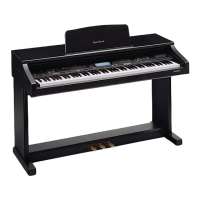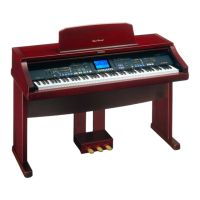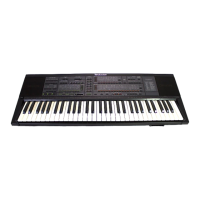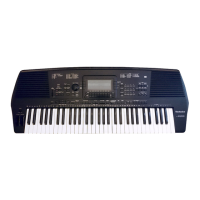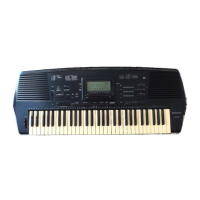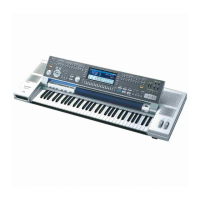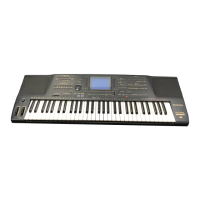
Do you have a question about the Technics SX-PR703/m and is the answer not in the manual?
| Sound Source | PCM |
|---|---|
| Polyphony | 64 notes |
| Display | LCD |
| Effects | Reverb, Chorus |
| Sequencer | 16 tracks |
| Pedals | Damper, Soft, Sostenuto |
| Connectivity | MIDI In/Out, Headphone |
| Keyboard | 88 keys, weighted hammer action |
Reduce risk of fire or electrical shock by not exposing the product to rain or moisture.
Provides guidelines for safe operation, including power source, polarization, and periods of non-use.
Block chords automatically added to the melody.
Fashion a customized display with favorite sounds and styles.
Record and play back your performance.
Select and customize instrument settings for your performance.
Add automatic accompaniment to your selected rhythm.
Play songs with realistic accompaniment automatically added to your performance.
Choose sounds from the list displayed.
Control drawbars while controlling the rhythms on the display.
Assign different sounds to each part of the keyboard.
Controls sound sustain when keys are pressed.
Sustains notes played while keys are pressed.
Apply studio processor effects like chorus, delay, and distortion.
Add richness and enhance performance with digital effects.
Add reverb effects when a microphone is connected.
Enhance harmony tones and offer choices for melody notes.
Choose rhythm groups and patterns.
Instructions on starting rhythms.
Finish the rhythm performance with an ending pattern.
Explanation of how Auto Play Chord generates accompaniment.
Four ways to specify chords for automatic accompaniment.
Specify chords using the left-hand part.
Specify chords using the left-hand part.
Entire keyboard used for automatic accompaniment.
Select a style for your performance.
Select a style for ensemble performance.
Define panel settings by changing rhythm.
Store up to 24 panel settings.
Name banks and memories.
Play phrases with solo accompaniment.
Copy phrases from one pad to another.
Compile phrases from different banks.
Overview of sequencer capabilities.
Explains the featured recording method.
Create a full musical arrangement.
Save patterns and phrases.
Copy and paste recorded data.
Record performance exactly as played.
Select track assignment presets.
Copy all recorded data of a song.
Copy recorded data from specific tracks.
Select range edit or transpose.
Steps to prepare for creating a new rhythm.
Procedure for recording key settings.
Lists data types that can be saved or loaded.
Description of MIDI IN, OUT, and THRU terminals.
